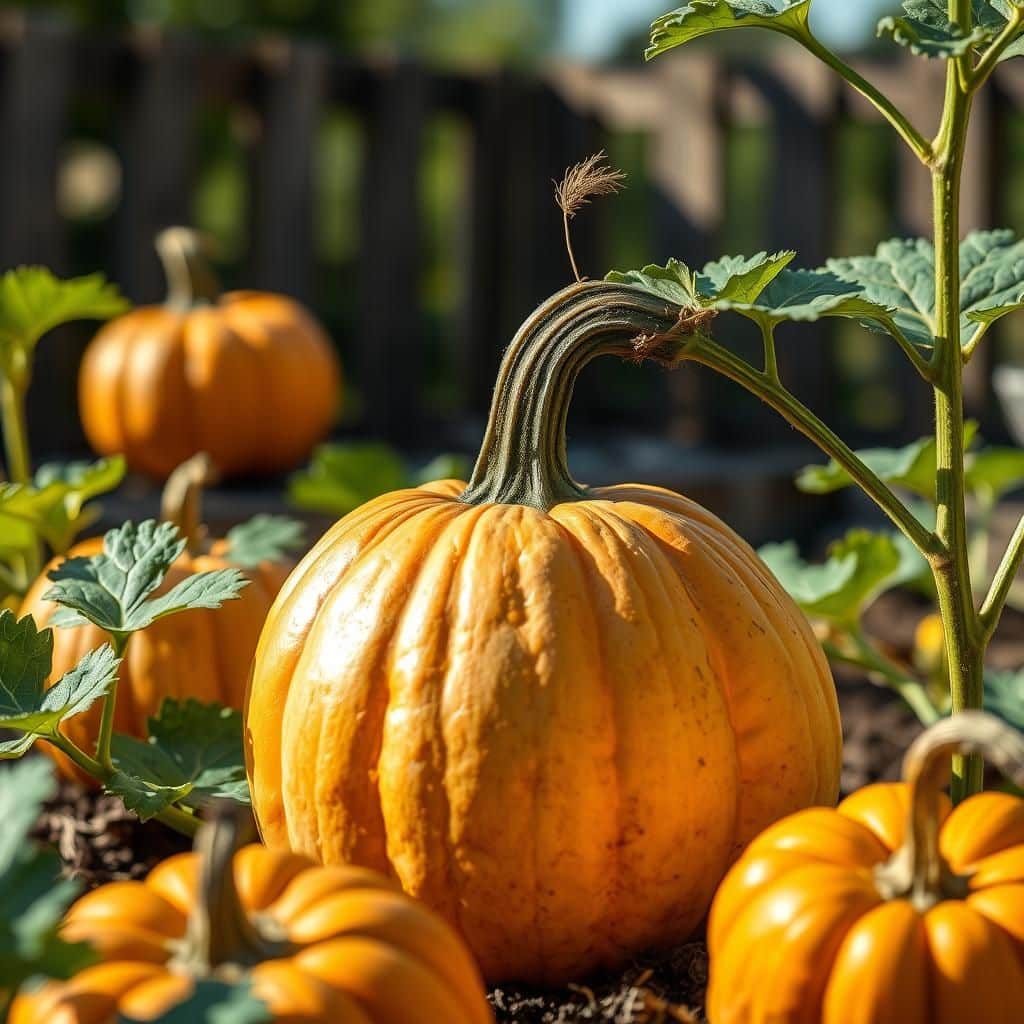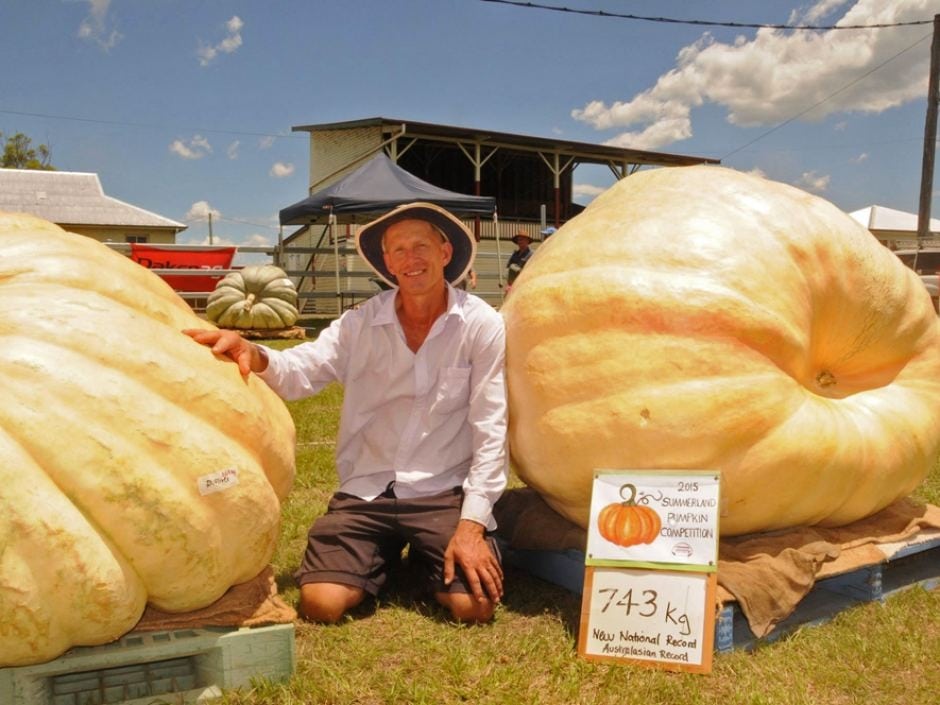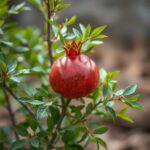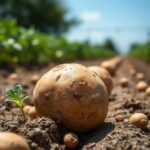When to Plant Pumpkin Melbourne: A Complete Guide for Successful Gardening

Growing pumpkins in Melbourne can be a rewarding yet challenging endeavor for gardeners. Understanding the right time to plant pumpkins is crucial to ensure a successful harvest. Factors such as local climate, soil conditions, and pumpkin variety all play vital roles in determining the optimal planting timeline. This complete guide will walk you through everything you need to know about when to plant pumpkins in Melbourne, from early preparation to care tips that will help your pumpkins thrive. Whether you’re a novice gardener or a seasoned expert, these insights will equip you for a fruitful pumpkin-growing season.
When to Plant Pumpkin in Melbourne
In Melbourne, the best time to plant pumpkins is during the late spring to early summer, specifically from mid-October to mid-December. This timeframe aligns with the city's warmest weather, which is essential for pumpkin growth. Planting seeds or seedlings during this period ensures that they receive adequate sunlight and warmth, allowing the plants to develop fully before the cooler temperatures of autumn set in. It’s important to monitor local frost dates and soil temperatures, as pumpkins thrive in soil temperatures of at least 15°C (60°F).
Optimal Soil Temperature for Pumpkins
Pumpkins prefer soil temperatures around 15–20°C (60–68°F) for optimal growth. If the soil is too cold, it can delay germination and stunt growth, while excessively warm soil can lead to poor seedling development. It is advisable to use a soil thermometer to ensure that the ground is warm enough before planting. Additionally, well-drained, nutrient-rich soil will significantly improve the chances of successful pumpkin cultivation.
Choosing the Right Pumpkin Variety
Selecting the appropriate pumpkin variety is crucial for successful planting in Melbourne. Some popular varieties suited for this climate include Butternut, Golden Nugget, and Queensland Blue. Each variety has different growing requirements and maturity times, so it's beneficial to choose one that aligns with the local climate and your gardening space. Varieties like the Jack-o'-lantern pumpkins are also great options for ornamental purposes and can thrive if planted correctly during the appropriate season.
Pumpkin Planting Techniques
When planting pumpkins, consider using the hill method, which involves mounding soil into small hills before sowing seeds. This technique enhances drainage and gives the plants extra warmth. Ideally, each hill should contain two to three seeds, sown about 2.5 cm (1 inch) deep. Seedlings should be thinned out later to ensure that the remaining plants have sufficient space to grow. Each hill should be spaced approximately 1.5 meters (5 feet) apart to allow for sprawling vines.
Watering Schedule for Pumpkin Plants
Pumpkin plants require consistent and adequate watering to thrive. During the germination period, keeping the soil moist is essential, but care must be taken to avoid overwatering, which can lead to root rot. Once the plants are established, a deep watering once a week is generally sufficient, although this may vary depending on rainfall and temperatures. Mulching around the base of the plants can help retain soil moisture and regulate temperature.
Pest and Disease Management
Pest and disease management is important when growing pumpkins in Melbourne. Common issues include aphids, squash bugs, and powdery mildew. Implementing companion planting strategies and practicing crop rotation can help mitigate these problems. Regularly inspecting plants for signs of pests or diseases allows for early intervention. Organic methods such as neem oil or insecticidal soap can be effective treatments without harmful chemicals.
| Aspect | Details |
|---|---|
| Planting Time | Mid-October to mid-December |
| Soil Temperature | 15–20°C (60–68°F) |
| Spacing | 1.5 meters (5 feet) apart |
| Watering Frequency | Once a week |
| Pests | Aphids, squash bugs |
What month do you plant pumpkin in Melbourne?

In Melbourne, the best time to plant pumpkins is primarily between October and November, during the spring season. This period is ideal as it allows the plants to take advantage of the warmer temperatures and increased sunlight needed for optimal growth. Pumpkins thrive in warm soil and air temperatures, which makes late spring the perfect time to start planting.
Optimal Growing Conditions
Pumpkins require specific growing conditions to flourish. Here are some important factors:
See also:
- Soil Temperature: Ideally, the soil temperature should be at least 15°C (59°F) for successful germination.
- Sunlight: Pumpkins need full sun exposure for at least 6-8 hours a day.
- Soil Quality: They prefer well-drained, loamy soil rich in organic matter.
Types of Pumpkins Suitable for Melbourne
There are various pumpkin varieties that can be grown effectively in Melbourne's climate:
- Butternut Pumpkin: Known for its sweetness and creamy texture.
- Queensland Blue: A traditional variety with a robust skin.
- Jarrahdale: Famous for its flavor and stunning blue-grey skin.
Planting Techniques
The method of planting can greatly influence the growth of pumpkin plants. Consider the following techniques:
- Direct Sowing: Plant seeds directly into the garden bed after the last frost date.
- Seedlings: Start seeds indoors and transplant them outdoors when conditions are favorable.
- Spacing: Ensure adequate spacing (about 1-2 meters apart) to allow for sprawling growth.
Pest and Disease Management
Managing pests and diseases is crucial for a healthy pumpkin crop. Key strategies include:
- Crop Rotation: Change the location of pumpkin planting each year to minimize disease risk.
- Companion Planting: Plant with marigolds or nasturtiums to deter pests.
- Regular Monitoring: Check plants frequently for signs of pests like aphids and caterpillars.
Harvesting Techniques
Knowing when and how to harvest pumpkins is essential. Follow these guidelines:
- Timing: Harvest when the vine begins to die back and the pumpkins have a hard skin.
- Cutting: Use a sharp knife or pruners to cut the pumpkin from the vine, leaving a small stem.
- Storage: Store pumpkins in a cool, dry place to prolong their shelf life.
What is the best month to plant pumpkins?
:max_bytes(150000):strip_icc()/GettyImages-674708461-2000-fe31570f6cb644d8a9ab4817198785b7.jpg)
The best month to plant pumpkins largely depends on your local climate and the specific variety of pumpkin. However, in general, late spring to early summer is the ideal timeframe, particularly from May to June in most temperate regions. This timing allows the plants to take advantage of warmer soil temperatures and longer daylight hours, which are crucial for optimal growth.
Understanding Pumpkin Growth Cycle
The growth cycle of pumpkins can be broken down into several stages, each requiring specific conditions.
- Germination: This stage begins when seeds are planted in warm soil (around 70°F or 21°C).
- Vegetative Growth: After germination, the plants focus on developing leaves and vines.
- Flowering: Early summer sees the emergence of flowers, crucial for pollination.
- Fruit Development: After pollination, the fruits begin to develop, needing plenty of nutrients and water.
Climate Considerations
Climate plays a critical role in when you should plant pumpkins.
- Frost Dates: Ensure that the risk of frost has passed, typically by mid to late spring.
- Soil Temperature: The soil should be at least 65°F (18°C) for optimal germination.
- Humidity Levels: High humidity can affect flowering and fruit set, so monitor local climate conditions.
Choosing the Right Pumpkin Variety
There are many pumpkin varieties, and their specific requirements can vary.
- Jack-o'-Lanterns: Typically need 90-120 days to mature, making late spring planting ideal.
- Sugar Pumpkins: Often planted in early June for fall harvesting.
- Giant Pumpkins: Require more time, so starting them indoors and transplanting can be beneficial.
Soil Preparation
Soil quality significantly affects pumpkin growth, making preparation essential.
See also:
- Soil Testing: Conduct a test to determine pH and nutrient levels.
- Amendments: Add organic matter like compost to enrich the soil.
- Tillage: Ensure the soil is tilled properly for good drainage and aeration.
Watering and Maintenance
Proper care during the growth phase is crucial for a successful pumpkin crop.
- Consistent Watering: Pumpkins require about 1-2 inches of water per week.
- Weed Control: Control weeds to reduce competition for nutrients and water.
- Pest Management: Monitor for pests and diseases and address them promptly.
What month are pumpkins usually planted in?
:max_bytes(150000):strip_icc()/GettyImages-674708461-2000-fe31570f6cb644d8a9ab4817198785b7.jpg)
Pumpkins are usually planted in the spring, particularly during the month of May in many regions of the Northern Hemisphere. The soil temperatures need to be consistently warm, ideally above 70°F (21°C), for optimal germination and growth. This timing can vary slightly depending on the specific climate of the region, as well as whether you are growing for early harvest or for October festivities, like Halloween. It's important to consider the local frost dates and ensure that all danger of frost has passed before planting.
Optimal Growing Conditions
Growing pumpkins successfully requires attention to their optimal growing conditions. These include:
- Temperature: Pumpkins thrive in warm weather, ideally when soil temperatures rise above 70°F.
- Sunlight: They require full sun exposure for at least 6-8 hours each day to grow vigorous plants.
- Soil: Well-drained, nutrient-rich soil with a pH between 6.0 and 6.8 is best for pumpkin cultivation.
Regional Planting Differences
The month of planting can vary greatly depending on the region's climate. For example:
- Southern regions: In warmer climates, pumpkins can be planted as early as late March or April.
- Temperate zones: Most growers in these areas will plant in May to ensure warm soil.
- Colder climates: In northern areas, June may be the preferred planting time to avoid frost.
Varieties and Their Planting Timing
Different pumpkin varieties may have specific planting requirements that affect when they should be sown. These include:
- Small pumpkins: Varieties for small pumpkins often can be planted slightly earlier due to shorter growing seasons.
- Giant pumpkins: These tend to require a longer growing season, often necessitating an earlier planting to ensure adequate time for maturation.
- Ornamental varieties: Such varieties can be planted in a similar timeframe but are often less sensitive to early planting than edible pumpkins.
Seeding Techniques
When planting pumpkins, it's vital to use appropriate seeding techniques for successful germination. These methods include:
- Sowing seeds directly: This is often preferred, especially in warmer climates, where seeds can be planted directly into the soil.
- Starting indoors: In colder areas, starting seeds indoors can give them a head start and should be transitioned outdoors after frost danger has passed.
- Spacing: Proper spacing is crucial; typically, seeds should be planted about 2-3 feet apart to allow for large vines and fruit growth.
Caring for Pumpkins Post-Planting
Once pumpkins are planted, proper care is essential to ensure healthy growth. Important factors include:
- Watering: Regular watering is crucial, especially during dry spells; avoid overhead watering to prevent mildew.
- Fertilizing: A balanced fertilizer can encourage growth, with higher phosphorus and potassium levels beneficial during the flowering phase.
- Pest Management: Keeping an eye out for pests and diseases ensures plants remain strong and productive, with integrated pest management techniques recommended.
Questions from Our Readers
When is the best time to plant pumpkins in Melbourne?
The best time to plant pumpkins in Melbourne is during the spring, ideally from late September to early November. This timing allows the plants to take advantage of the warmer temperatures and longer days, which are essential for healthy growth.
What climate conditions do pumpkins need?
Pumpkins thrive in a warm climate with plenty of sunlight. In Melbourne, ensuring the soil temperature is around 15-20°C is crucial for seed germination. Additionally, consistent moisture without waterlogging is key to healthy pumpkin development.
See also:
Can I start pumpkins indoors before planting them outside?
Yes, starting pumpkins indoors is a good strategy, especially in Melbourne. You can sow seeds in seed trays about 4-6 weeks before the last frost date, which gives your plants a head start. Make sure to harden them off before transplanting them outdoors.
How much space do I need between pumpkin plants?
Pumpkin plants require ample space to grow. In Melbourne, it is recommended to leave about 1.5 to 2 meters between each plant. This spacing allows for proper air circulation and light exposure, helping to prevent diseases and ensuring healthy fruit development.

If you want to read more articles like When to Plant Pumpkin Melbourne: A Complete Guide for Successful Gardening, we recommend you check out our Seeds category.
Leave a Reply
Related Articles